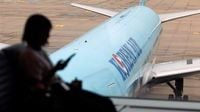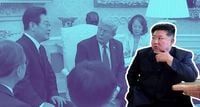On August 26, 2025, the diplomatic stage in Washington, DC, was set for a high-stakes encounter between South Korean President Lee Jae Myung and US President Donald Trump. The summit, held in the storied Oval Office, was more than just a ceremonial handshake—it was a carefully choreographed dance around sensitive political flashpoints, economic ambitions, and the ever-present specter of North Korea’s nuclear ambitions. Both leaders, each with their own domestic pressures and international reputations at stake, managed to navigate the meeting with a blend of flattery, transactional promises, and strategic ambiguity.
In the hours leading up to the summit, tensions flared unexpectedly when Trump posted on social media about a "purge or revolution" in South Korea, a comment that sent tremors through Seoul’s delegation. According to reporting by The Korea Herald, the statement seemed to echo conspiracy theories tied to South Korea’s political turbulence following the failed martial law bid by ousted former president Yoon Suk-yeol. But once face-to-face, Trump softened his stance, calling the episode a "misunderstanding" after Lee explained the legal process behind Yoon’s arrest and ongoing investigation. It was a deft maneuver by Lee, who, as Herald Corp noted, aimed to avoid confrontation and instead appeal to Trump’s self-image as a world-class dealmaker.
From the outset, Lee’s strategy was clear: use flattery as a diplomatic tool. He praised the Oval Office’s décor, lauded America’s prosperity, and tied Trump’s leadership to the record-breaking Dow Jones. But the real masterstroke came when Lee linked South Korea’s interests directly to Trump’s legacy, describing Trump as the essential "peacemaker" for the Korean Peninsula. Lee’s memorable metaphor—"If you play the role of a peacemaker, I will work hard as a pacemaker to support you"—was both a nod to Trump’s ego and a subtle assertion of South Korea’s indispensable role in any peace process. Trump responded warmly, saying, "Kim Jong Un and I had a very good relationship, as you remember, and still do." He went further, expressing his openness to meeting Kim again, possibly even within the year, and praised Lee’s approach as "a much better one" compared to previous South Korean leaders.
North Korea was, unsurprisingly, the summit’s central theme. Lee implored Trump to reclaim his pivotal role in restarting stalled nuclear talks with Pyongyang. Trump, recalling his personal rapport with Kim Jong Un, signaled a willingness to reengage: "We can make big progress with North Korea—absolutely." Lee, for his part, emphasized the urgency: "With my involvement, it is not easy to improve inter-Korean ties, but in reality, the only person who can resolve this issue is President Trump." The mutual flattery helped mask the underlying uncertainty—North Korea has repeatedly rejected Lee’s overtures and remains steadfast in its nuclear ambitions. Still, the summit succeeded in keeping diplomatic doors ajar and ensuring Seoul was not sidelined in any future US-North Korea dialogue.
Yet, the conversation didn’t stop at nuclear diplomacy. Trump, ever unpredictable, pivoted to historical disputes between South Korea and Japan, raising the issue of "comfort women"—a euphemism for victims forced into sexual slavery during Japan’s colonial rule—as a barrier to closer trilateral cooperation. "I thought that was settled a few times over the decades. But there is an overlapping problem with that. It was hard getting Japan and Korea together because of what took place a long time ago. But Japan wants to do it, I can say. Korea is a little bit more tenuous," Trump remarked, according to The Korea Herald. The comment, while perhaps well-intentioned, touched a raw nerve in South Korea, where memories of colonial rule remain deeply sensitive.
On China, Trump opted for levity over policy, joking, "Maybe we’ll go together. Do you want to go together? We can share a plane. We’ll save energy. We’ll save the ozone layer." Lee played along, signaling a willingness to cooperate, but the exchange highlighted the summit’s preference for humor and symbolism over concrete policy shifts regarding Beijing.
Perhaps the most notable aspect of the summit was what wasn’t discussed in detail. Contentious issues like US troop deployments in South Korea, cost-sharing for defense, and unresolved trade frictions were largely sidestepped. Trump did reiterate his view that South Korea should shoulder more of the costs for the US military presence, inflating troop numbers to "over 40,000"—well above the actual 28,500—and falsely claiming that former President Joe Biden had abandoned cost-sharing arrangements. He also floated the idea of the US gaining ownership of land currently used by American forces in South Korea, a proposal that, while not new, raised eyebrows given the complex legal and historical agreements underpinning the US military’s presence on the peninsula.
Economic cooperation, on the other hand, took center stage. In the wake of the summit, South Korean conglomerates unveiled a wave of multibillion-dollar deals in the US. According to Yonhap and CNN, at least four Korean business giants—including Korean Air, Hyundai Motor Group, Samsung Electronics, and SK Group—announced investments totaling $150 billion. Korean Air alone committed to a $50 billion purchase of aircraft and engines from Boeing and others, a deal that includes 20 Boeing 777-9s, 25 Boeing 787-10s, 50 Boeing 737-10s, and eight Boeing 777-8F freighters. Hyundai, meanwhile, pledged an additional $5 billion on top of its earlier $21 billion US investment, earmarked for expanding automobile and parts production, a new steel mill in Louisiana, and a state-of-the-art robotics facility—projects expected to create 25,000 direct jobs between 2025 and 2028.
The summit also produced a high-profile business roundtable attended by executives from 21 American companies, including Nvidia, OpenAI, IBM, Google, Boeing, and General Motors. Lee called for a "manufacturing business renaissance" where both countries could win, urging cooperation in strategic sectors like shipbuilding, semiconductors, artificial intelligence, and biotech. The trade agreement struck just weeks earlier—requiring South Korea to invest $350 billion in the US, with significant funds earmarked for shipbuilding, semiconductors, batteries, biologics, and energy—was touted as a win-win, though some skeptics in Seoul warned it could deepen South Korea’s dependence on US political goodwill.
Other deals announced included a new agreement by Korea Gas Corporation to purchase 3.3 million additional tons of liquefied natural gas annually from the US starting in 2028, and a strategic partnership between Samsung Heavy Industries and Oregon’s Vigor Marine Group to maintain and repair US Navy support ships.
As the dust settled, assessments in Seoul described the summit as a tactical success for Lee. He avoided confrontation, won Trump’s praise as "a very good representative for South Korea," and reassured markets by averting immediate escalation on trade or defense disputes. Still, many observers noted the fragility of this success. The flattery offensive may have ensured cordiality, but it didn’t resolve the deeper, structural challenges facing the US-South Korea alliance—nor did it guarantee progress on North Korea, trade reciprocity, or alliance modernization.
For now, Lee’s Washington debut stands as a masterclass in pragmatic diplomacy—one that bought time and goodwill, but left the hardest questions for another day.


